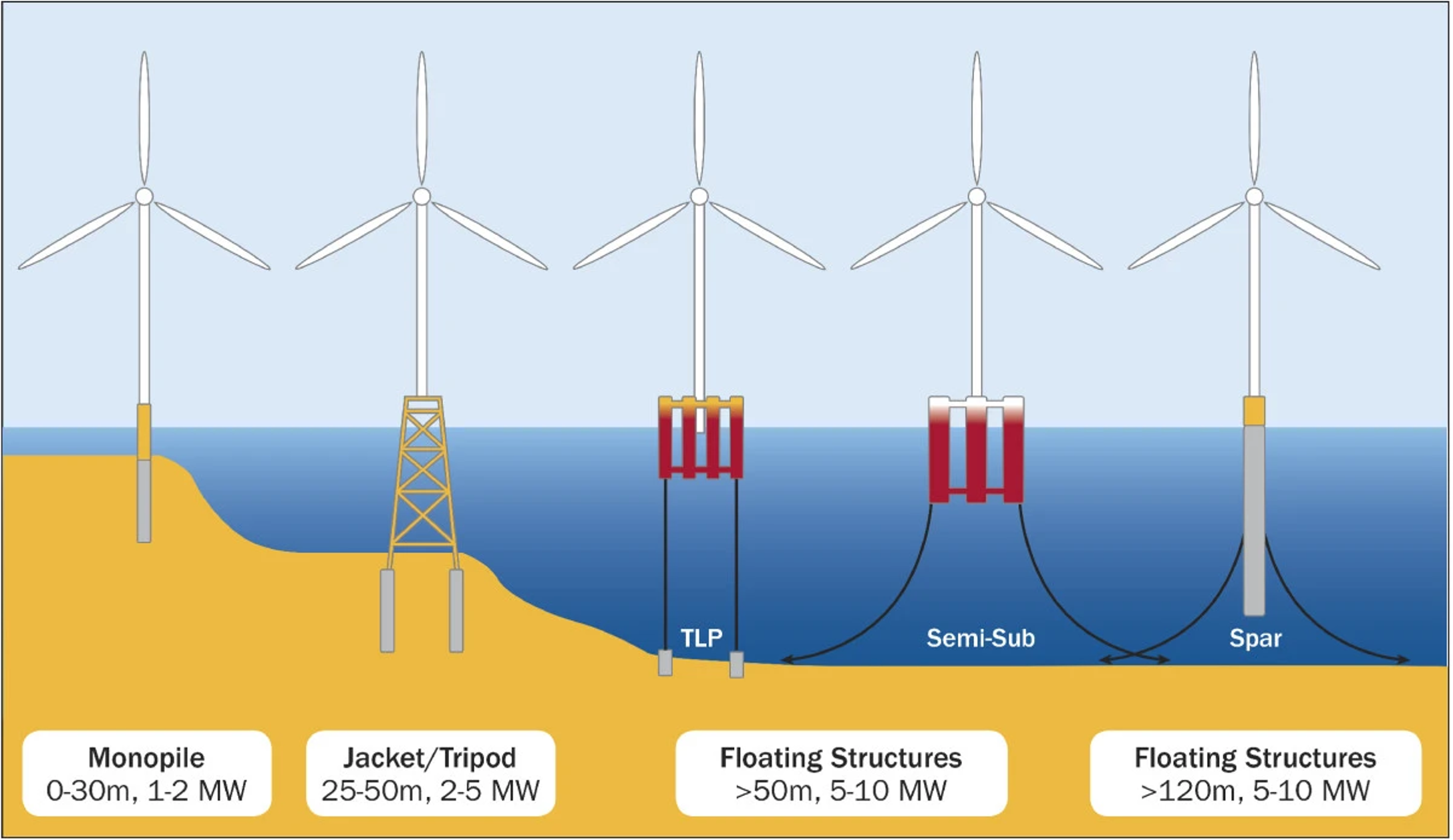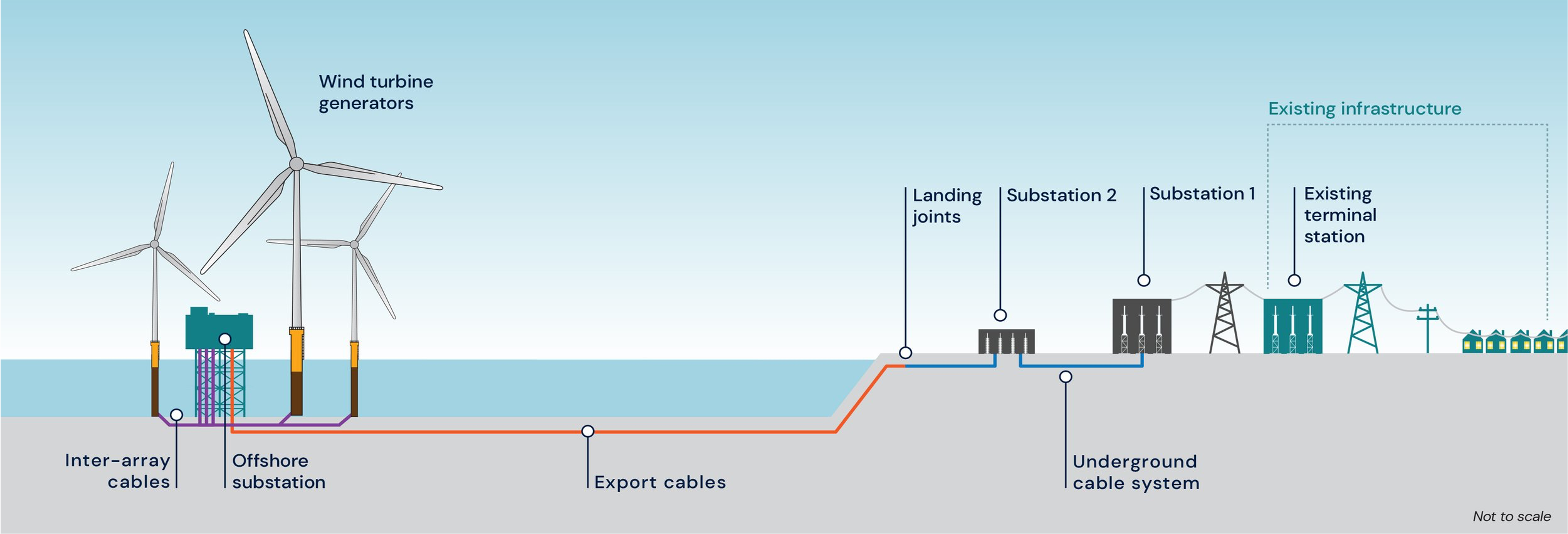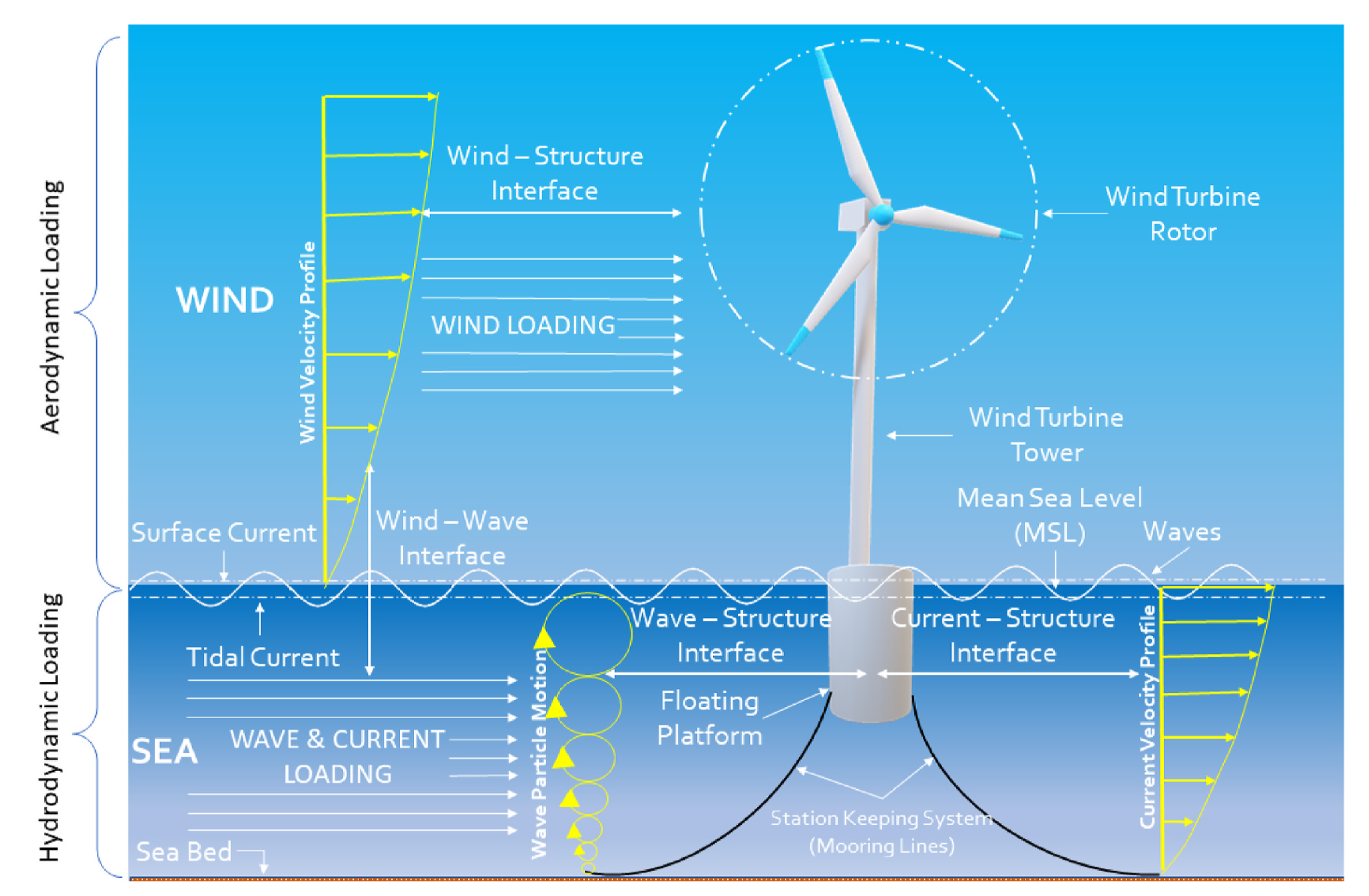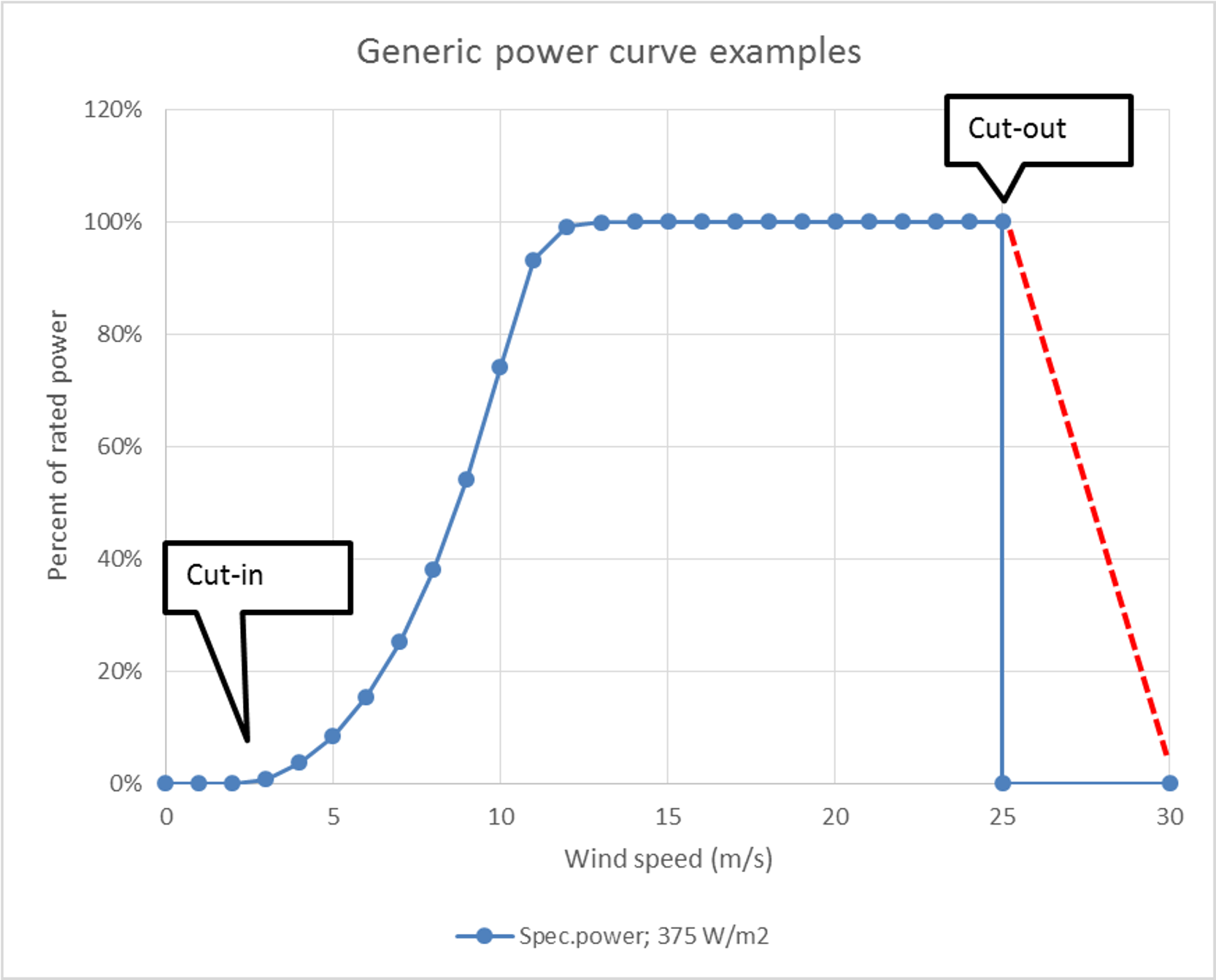Offshore Wind Turbines
Technical Description
The basic operating principles of offshore wind turbines are the same as for onshore turbines, although modifications are required to make the turbines suitable for deployment offshore. The corrosive offshore environment resulting from the high levels of salt and moisture in the air leads to additional requirements for electrical and mechanical components. Since the world’s first offshore wind project at Vindeby in Denmark, many offshore turbines have been equipped with air conditioning systems to protect the sensitive electronics inside the units, and with North Sea-grade protective paint to protect the external steel structures.
Foundations for offshore turbines are subject to more complex load conditions than onshore foundations and the design and concept of offshore foundations are therefore very different from onshore foundations. They must be designed to survive the harsh marine environment and the impact of large waves and ice. These factors and the cost of installation necessitate that they are more expensive than onshore foundations for turbines of similar size.
Technological innovations such as floating substructures may have the potential to reduce the overall cost in the future. Floating substructures can be designed to be well-suited for large serial production, and they are the only solution for deep waters, in which monopiles and jackets come to their limits.
The major advantages of offshore wind turbines, relative to onshore wind turbines, are the better wind resources offshore, the reduction of the visual and noise impacts from turbines which has become a major barrier for onshore deployment, and the possibility of building much larger wind farms than onshore. There are, however, more logistical considerations associated with building wind turbines offshore than onshore and needs for more expensive equipment, resulting in higher capital costs for offshore wind farms. Those costs, however, can pay off when considering the bigger scale of the projects and better wind resource. [4]

Types of Offshore Wind Turbine Foundations [1]
Technology Flowchart

Power generation from offshore wind farms [2]
Technology requirements and operating conditions

Schematic diagram of fluid-structure interfaces and dynamic loads of floating offshore wind turbine [3]

Power curve example ( Specific power values refer to e.g. 7 MW with 154 m rotor diameter )[4]
Documentation (Links, References)
- Bailey, H., Brookes, K.L., & Thompson, P.M. (2014). Assessing environmental impacts of offshore wind farms: lessons learned and recommendations for the future. Aquatic Biosystems, 10, 8 - 8.
- https://www.starofthesouth.com.au/offshore-wind
- Barooni, M., Ashuri, T., Velioglu Sogut, D., Wood, S., & Ghaderpour Taleghani, S. (2022). Floating offshore wind turbines: Current status and future prospects. Energies, 16(1), 2.
- Danish Energy Agency, Technology Data for Generation of Electricity and District Heating, February 2024, https://ens.dk/sites/ens.dk/files/Analyser/technology_data_catalogue_for_el_and_dh.pdf
